an art of precarious balance
Over the last month one of the treats — & it has camped on the top of my desk, on the armrest of the armchair in the living room, on the bedside table, and, risk-taker that I am, even on the clothes hamper that serves as bathtub side-table — has been the George Quasha’s latest offering: Axial Stones : an art of precarious balance, published by North Atlantic Books with a foreword by Carter Radcliff, superb photos of the objects in question by Sherry Williams, and excellent and insightful writing (commentarry, essays and poems) by Quasha himself. I’ve followed Quasha’s work since his Somapoetics bowled me over in the early seventies, and though it had gotten more quiet around him qua poet as he focused for many years on setting up and running Station Hill Press, Quasha kept writing and expanding his activities into other art areas: not only writing poetry, but inventing critical dialogues with Chuck Stein (that I would like to see gathered into book form one of these days — hey, Richard Grossinger, over there at NAB, there’s a project for you!) ,drawing, doing mixed media performances, practicing tai chi chuan, working with sound and video. And gathering the stones that make up the quary of this book — a book not be mistaken for an “catalogue,” even if it is that too; a book that is a mixed media work of art in itself.
Here is how Carter Ratcliff describes the work in his preface:
At first glance, it looks as if Quasha has found a batch of wildly eccentric natural objects. Then one realizes, with a start, what one is seeing. In each case, not one but two objects have been joined at precisely the point that turns them into a unity. These configurations appear to be sturdy. Yet each is so delicately balanced that the slightest touch would topple it. Their collective title, Axial Stones, draws attention to the axes around which all of them must, out of deference to gravity, be organized. Most axes—the axis of the earth, for example, or the crossed axes of a Beaux Arts building—are not only clear but stable and, we hope, permanent. The axes of the Axial Stones are different: clear and for the moment stable but charged with an air of contingency. Uninterested in the sort of axis that enforces solidity, Quasha finds ones that look alive with precariousness.
When I gaze at these sculptures, I feel two equally strong impulses. The first one is to shut up and just take in the awesome — uncanny may be the better word — beauty of these balanced objects as sort of standing impossibilities, stone koans, revealed numinosities. The other is its symmetrical opposite: I feel the urge to discourse on the aesthetic pleasure these objects give, the ethical statements they make and the intellectual stamina they reveal. I could link them as well to Kant’s ideas about the sublime in art, to the aesthetics of Japanese stone gardens or to the conceptual event horizon of someone like Alan Kaprow or John Cage. My eye and intellect find delight exactly at that edge between the natural fact of these found objects and their art-ificial aesthetic existence as “sculptures” — including the “absence” of the artist, whose only intervention has been the gathering and balancing, the conceptual and concrete finding of an energetic axis that will put two stones in a precarious but stable relation. The book includes a sequence of photos that show Quasha “performing” the mise en scène, i.e. the installation of one of the sculptures, and indeed one can read these sculptures as a performance in which the artist has removed himself before the curtain rises and will only come back after the curtain falls to carefully deconstruct the ethereal yet stone-heavy balance he has created. Look: no hands, no frame, no glue, no screws, no cement, no wires — just stones in air and on earth. An ecological art and statement in its economy of means, its foregrounding of non-machined natural objects brought into a relation among themselves by a human intervention that creates a sort of “temporary autonomous energy zone” that is completely reversible. This is lithic art, working in areas that have fascinated humans since neo-lithic times, from Stonehenge hence.



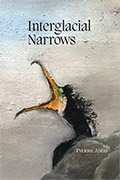 “Interglacial Narrows (Poems 1915-2021)” Contra Mundum Press
“Interglacial Narrows (Poems 1915-2021)” Contra Mundum Press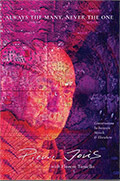 “Always the Many, Never the One: Conversations In-between, with Florent Toniello” Contra Mundum Press
“Always the Many, Never the One: Conversations In-between, with Florent Toniello” Contra Mundum Press “Conversations in the Pyrenees”
“Conversations in the Pyrenees”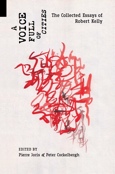 “A Voice Full of Cities: The Collected Essays of Robert Kelly.” Edited by Pierre Joris & Peter Cockelbergh
“A Voice Full of Cities: The Collected Essays of Robert Kelly.” Edited by Pierre Joris & Peter Cockelbergh “An American Suite” (Poems) —Inpatient Press
“An American Suite” (Poems) —Inpatient Press “Arabia (not so) Deserta” : Essays on Maghrebi & Mashreqi Writing & Culture
“Arabia (not so) Deserta” : Essays on Maghrebi & Mashreqi Writing & Culture “Barzakh” (Poems 2000-2012)
“Barzakh” (Poems 2000-2012) “Fox-trails, -tales & -trots”
“Fox-trails, -tales & -trots”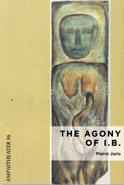 “The Agony of I.B.” — A play. Editions PHI & TNL 2016
“The Agony of I.B.” — A play. Editions PHI & TNL 2016 “The Book of U / Le livre des cormorans”
“The Book of U / Le livre des cormorans”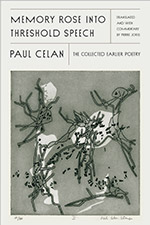 “Memory Rose Into Threshold Speech: The Collected Earlier Poetry of Paul Celan”
“Memory Rose Into Threshold Speech: The Collected Earlier Poetry of Paul Celan”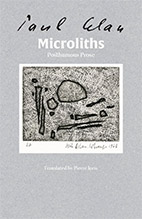 “Paul Celan, Microliths They Are, Little Stones”
“Paul Celan, Microliths They Are, Little Stones”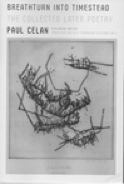 “Paul Celan: Breathturn into Timestead-The Collected Later Poetry.” Translated & with commentary by Pierre Joris. Farrar, Straus & Giroux
“Paul Celan: Breathturn into Timestead-The Collected Later Poetry.” Translated & with commentary by Pierre Joris. Farrar, Straus & Giroux